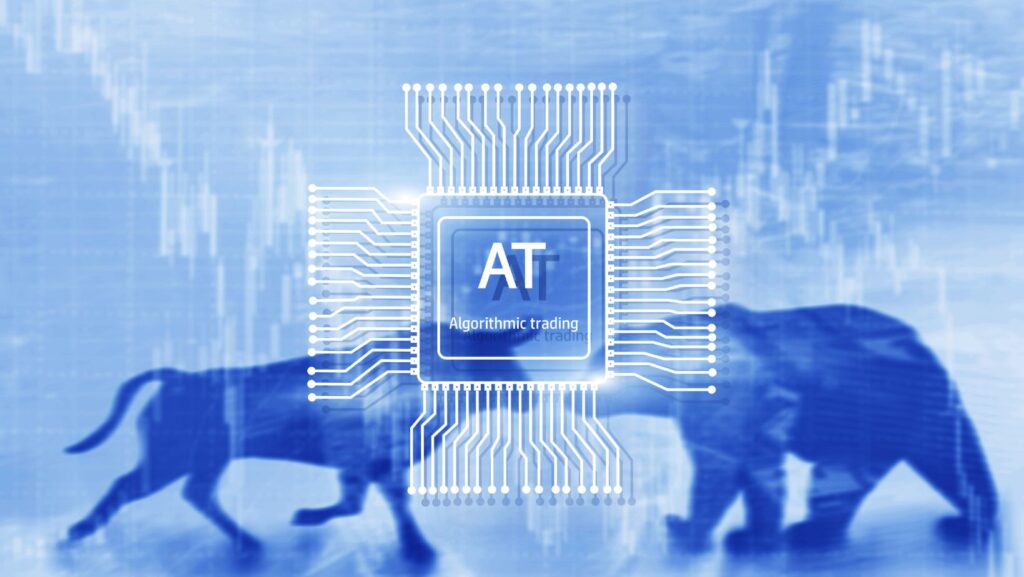
Algorithmic trading, often referred to as algo-trading or automated trading, has transformed the financial markets by allowing trades to be executed with speed and precision that far surpasses human capability. In this landscape, algorithms designed to execute orders based on predetermined criteria have become indispensable tools for traders looking to optimize their strategies and capitalize on market opportunities.
However, with great opportunity comes a unique set of challenges. In this article, we’ll explore the fundamentals of algorithmic trading, the advantages it offers, and the potential pitfalls traders must navigate. Additionally, we’ll examine how traditional technical tools, like candlestick patterns, can still play a vital role in the development and refinement of algorithmic strategies.
What Is Algorithmic Trading?
At its core, algorithmic trading involves using computer programs to execute trades based on a set of predefined instructions. These instructions can be based on a variety of factors, including timing, price, volume, and other technical indicators. The primary advantage of this approach is the ability to execute orders at a speed and frequency that is impossible for human traders.
Integration of Technical Indicators: While algorithmic trading is often associated with complex mathematical models, it also leverages traditional technical indicators. For example, an algorithm might be programmed to buy or sell based on moving average crossovers, RSI levels, or other indicators. This is where candlestick patterns can come into play as well. Algorithms can be designed to recognize specific candlestick formations, such as a bullish engulfing pattern, and execute trades accordingly. This integration ensures that the algorithm not only reacts to quantitative signals but also considers the qualitative nuances of price action.
The Opportunities in Algorithmic Trading
Algorithmic trading offers several significant advantages that attract both institutional and retail traders alike:
Speed and Efficiency: Algorithms can execute trades in milliseconds, taking advantage of even the smallest price discrepancies. This speed can be crucial in high-frequency trading (HFT) environments, where the ability to act quickly can mean the difference between profit and loss.

Elimination of Human Emotion: By automating the trading process, algorithms remove the emotional component from trading, reducing the risk of decisions based on fear or greed. This can lead to more consistent and disciplined trading practices.
Backtesting Capabilities: Algorithms can be rigorously tested against historical data to assess their potential effectiveness before being deployed in live markets. This backtesting process helps refine strategies and improve their chances of success.
Scalability:An algorithm can monitor multiple markets and assets simultaneously, allowing traders to diversify their portfolios and increase their exposure to various opportunities.
Challenges and Risks of Algorithmic Trading
Despite its advantages, algorithmic trading is not without its challenges. Traders must be aware of these risks to mitigate potential downsides:
Overfitting and Optimization Bias: One of the biggest risks in algorithmic trading is overfitting, where an algorithm is too closely tailored to historical data, making it less effective in real-world scenarios. Over-optimization can lead to strategies that perform well in backtesting but fail in live markets.
Market Impact and Liquidity Issues: While algorithms can execute large volumes of trades quickly, they can also impact the market by causing price fluctuations, especially in less liquid markets. Traders must be careful to design algorithms that account for market impact and avoid inadvertently creating price movements that could work against them.
Technical Failures: Algorithmic trading relies on technology, and any technical failure—whether it’s a glitch in the software, a server outage, or connectivity issues—can lead to significant losses. Ensuring robust, reliable infrastructure is critical.

Regulatory Challenges: The increasing prevalence of algorithmic trading has led to more stringent regulatory scrutiny. Traders must ensure their algorithms comply with all relevant regulations, which can vary widely across different markets and jurisdictions.
The Role of Candlestick Patterns in Algorithmic Trading
While algorithmic trading is often associated with complex quantitative strategies, the integration of traditional technical analysis tools like candlestick patterns can significantly enhance an algorithm’s effectiveness. Candlestick patterns offer unique insights into market psychology and serve as powerful indicators of potential reversals or continuations, making them invaluable in refining trading strategies.
Modern trading algorithms can be programmed to recognize and act on specific candlestick patterns, allowing traders to combine the precision and speed of automated systems with the nuanced understanding of market behavior that candlestick analysis provides. For instance, an algorithm might be set to initiate a trade when a bullish engulfing pattern appears after a downtrend, signaling a potential reversal. This approach blends the algorithm’s efficiency with the time-tested reliability of technical analysis, offering a more robust and informed trading strategy.
Additionally, algorithms can be designed to use candlestick patterns in conjunction with other technical indicators. For example, when a candlestick pattern forms at a key moving average or near a significant support or resistance level, it can trigger a trade, providing an extra layer of confirmation and reducing the likelihood of false signals. By integrating these traditional tools into algorithmic strategies, traders can create more comprehensive and effective trading systems that leverage the best of both worlds.
FAQ
What is algorithmic trading?
Algorithmic trading is the use of computer programs to execute trading strategies automatically. These programs analyze data, identify trading opportunities, and execute orders at high speeds.
How does algorithmic trading enhance trading efficiency?
Algorithmic trading enhances trading efficiency by leveraging high-speed connectivity and complex algorithms to capitalize on market inefficiencies, resulting in faster and more accurate trade execution.
What are the challenges of algorithmic trading?
Algorithmic trading faces challenges such as technical complexities, regulatory requirements, and ethical considerations. Technical challenges include dealing with vast amounts of data and ensuring low-latency connectivity. Regulatory challenges involve adhering to stringent regulations imposed by regulatory bodies. Ethical considerations revolve around maintaining fairness and market integrity.
What are the future trends in algorithmic trading?
Future trends in algorithmic trading include the role of Artificial Intelligence and Machine Learning, the impact of blockchain technology, and the potential of quantum computing. These advancements have the potential to revolutionize algorithmic trading strategies, risk management techniques, and trade settlement processes.
Algorithmic trading is undoubtedly reshaping the financial landscape. The opportunities it presents are immense, but so are the challenges. By staying informed, adapting to technological advancements, and acting responsibly, traders can navigate the evolving landscape of algorithmic trading while reaping its rewards.












